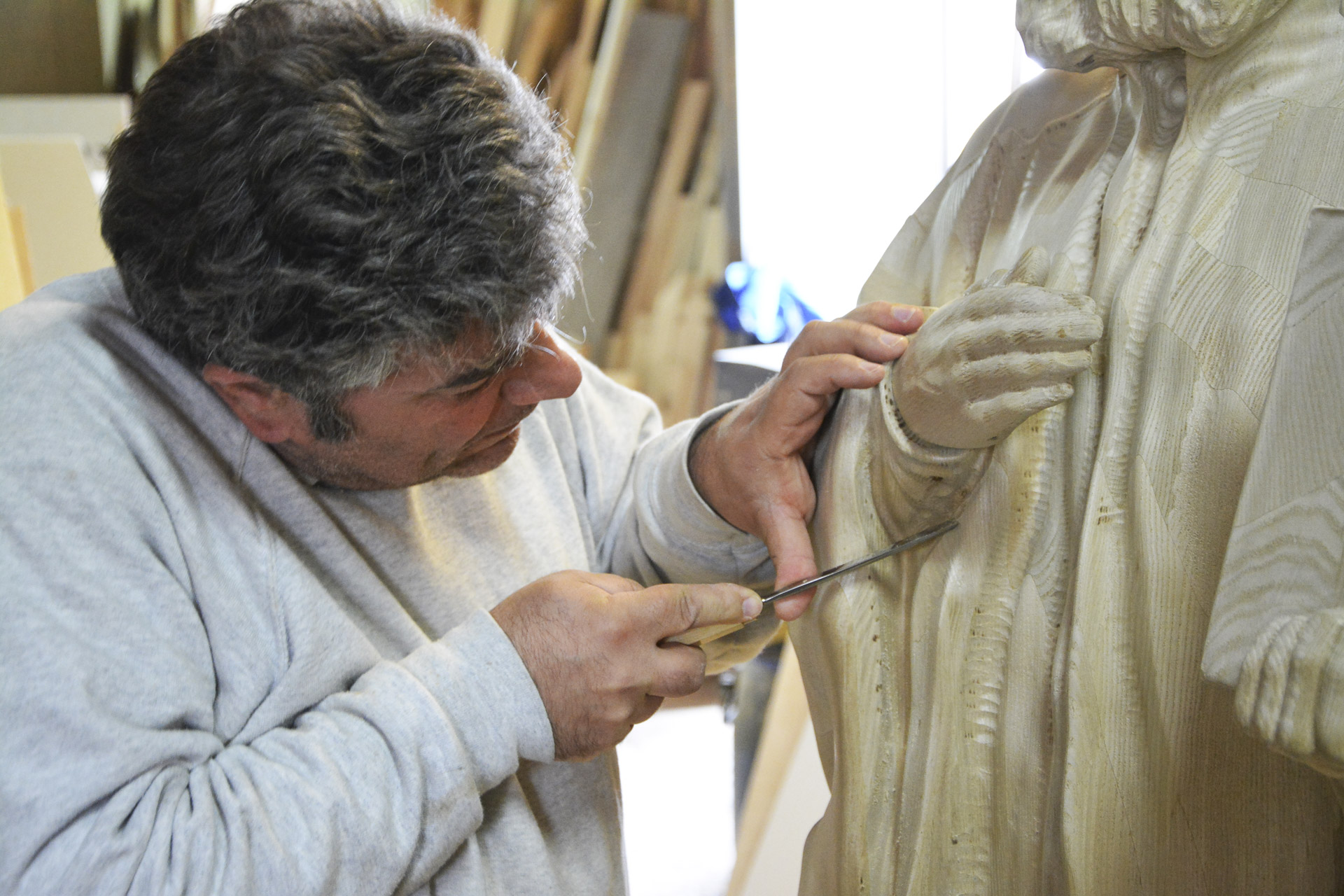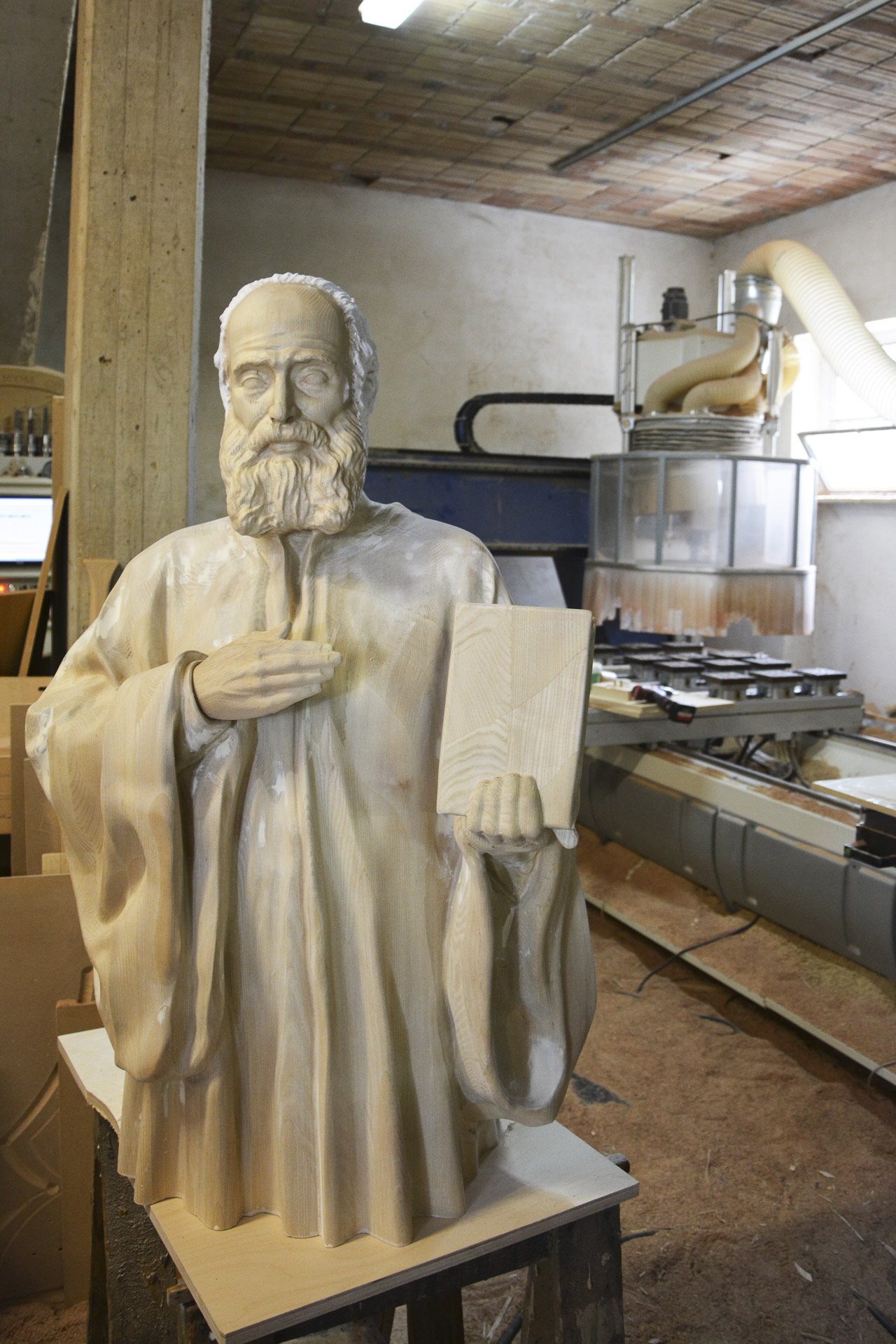How the “Wooden Bust of St. Nicholas Greco” came about.
A statue of the saint was missing
The church of St. Francis of Assisi in Guardiagrele has held the relics of St. Nicholas Greco since 1343, but until yesterday there was no representative statue of the saint. The most faithful representation is the simulacrum clad in the typical habit of Basilian monks, while the face and hands are made of ceramic.Thus arose the need, on the part of the St. Nicholas Greco Foundation of Guardiagrele, to commission the creation of a bust of the saint.
The commission of a faithful reproduction in wood
The study and research part was taken care of by an appointed committee formed by the foundation, M° Angelo Catano and Bishop Giuseppe Liberatoscioli. Which outlined the iconographic and symbolic features that best represented the saint, taking into consideration all historical, artistic and religious aspects.
The realization was entrusted to the firm Francesco Carullo of Orsogna, at the suggestion of theEnte Mostra dell’Artigianato Artistico Abruzzese in Guardiagrele. In the design of the sculpture , the most innovative techniques ofdigital craftsmanship were put to work, making use of the collaboration of experts in the different stages of realization
The 3D scan of the Saint’s relics
To ensure the highest fidelity of the statue to the existing face, the 3D scanning technique was used, which allows the three-dimensional shapes to be captured, with an accuracy of 0.5 mm, and transformed into a digital drawing. Scanning also involved the ceramic hands belonging to the simulacrum. The habit was worn by a model who posed according to the committee’s instructions; a missal was placed in his left hand. This phase was taken care of by Simone Carullo, who was in charge of surveying the shapes and then pairing them together in order to sketch an initial digital processing in the form of a point cloud.
The 3D modeling of the project
Then digital sculptor Simone Rasetti reworked the scanned geometry using three-dimensional modeling software (ZBRUSH), reconstructing the missing parts. Using digital technology, the sculptor refined the geometric surface with details and facial details; the entire process was carried out following historical documentation and guidelines agreed upon with the working group.
From design to construction of the work using cnc numerical control milling technique
The developed saint design was imported into Alphacam CAD-CAM software. The purpose of this software is to generate the paths by setting the appropriate strategy and tools and all other technological parameters. The CNC machine follows the programming codes for making the wooden sculpture. Thanks to this type of woodworking, pieces having centesimal precision can be obtained, and in addition, the shapes closely mirror those of the three-dimensional drawing.
With certain programming and machine setting criteria, surfaces with excellent finish can also be obtained. As for the torso, it was divided into two main parts, front and back, and two secondary parts, the open right hand and the left hand with the book. Roughing and finishing was done on all parts, and the inner part of the statue was hollowed out so as to lighten it, resulting in a total weight of about 50 kg. For smaller details, the following was used a 6 mm diameter milling cutter; the programming was divided into 26 planes of work to make all the undercuts, resulting in a total of about 4.6 mln rows. The wood material had been prepared previously through a system of linear sections on the 3D CAD model so as to have exactly the right amount and size of wood to be processed. The wood used was sassafras.
The final finishing touches of the sacred sculpture
After CNC machining was completed, careful sanding and finishing of details with gouge was performed. The work was later transferred to the laboratory of the painter Nicoletta Legnini which dealt with the pictorial decoration. La wooden sculpture was prepared for the polychrome decoration by treating its surface by brush application of a chalk primer from Lefranc & Burgeois , applied in successive layers and carefully smoothed with gilding sandpaper in order to obtain an optimal spread of the pictorial material. It was then painted with oil and resin art colors” Mussini series10″ from Schmincke. Some details were decorated with leaf silvering, applied with the oil technique (mission). Finally, a light protective coating with J.G.Vibert Lefranc&Bourgeois Extrafine Retouching Varnish was applied to the work.To complete the project, a sapelli mahogany pedestal was made and an ancient antiphon in Latin dedicated to the saint was engraved on the side surfaces.

















